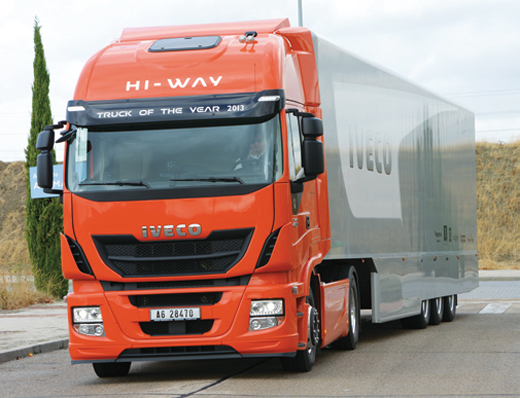
Iveco’s new Stralis is ready for Euro 6 without requiring EGR. We take it for a test drive to see how it fares on the open road
By Steev Hayes
Photography Steev Hayes / Iveco
It was back in 2011 when Iveco announced it had cracked the complexities of the Euro 6 nut using a further development of selective catalytic reduction (SCR) technology alone. The announcement of an SCR-only system without the need for an additional exhaust gas recirculation (EGR) system was a first.
Iveco has dubbed its set-up high efficiency selective catalytic reduction (HI-eSCR) and other benefits, aside from the huge reduction in emissions, is greater durability, optimised fuel consumption and a reduction in weight. “We offer fleets a Euro 6 engine which follows the same path of technical development as our Euro 4, Euro 5 and EEV-rated engines,” said Iveco product director, Martin Flach. “Critically, this allows us to simplify the after-treatment system and use the same ‘body-in-white’ of the previous generation Stralis, since our Euro 6 engines do not require any additional cooling.” He also said the new engines, while using marginally more AdBlue, also boast better fuel economy, so one cancels out the cost of the other.

The engines offer better performance over earlier versions, with maximum torque available at lower speeds – typically starting at 1000 rpm – while gearbox manufacturer ZF has specially modified the EuroTronic automated transmissions fitted to the Euro 6 Stralis range. Matching the different power and torque characteristics of the new engines to the transmissions led to the need for fewer gearchanges under a variety of driving/working conditions, so maximising driver comfort and increasing overall efficiency.
Optimised combustion efficiency in the engines is achieved via high average cylinder pressure and high injection pressure, using a new generation common rail fuel injection system with a maximum pressure up to 2200 bar.
 Read the rest of this feature in the December issue of Trucking. Buy the magazine here
Read the rest of this feature in the December issue of Trucking. Buy the magazine here






